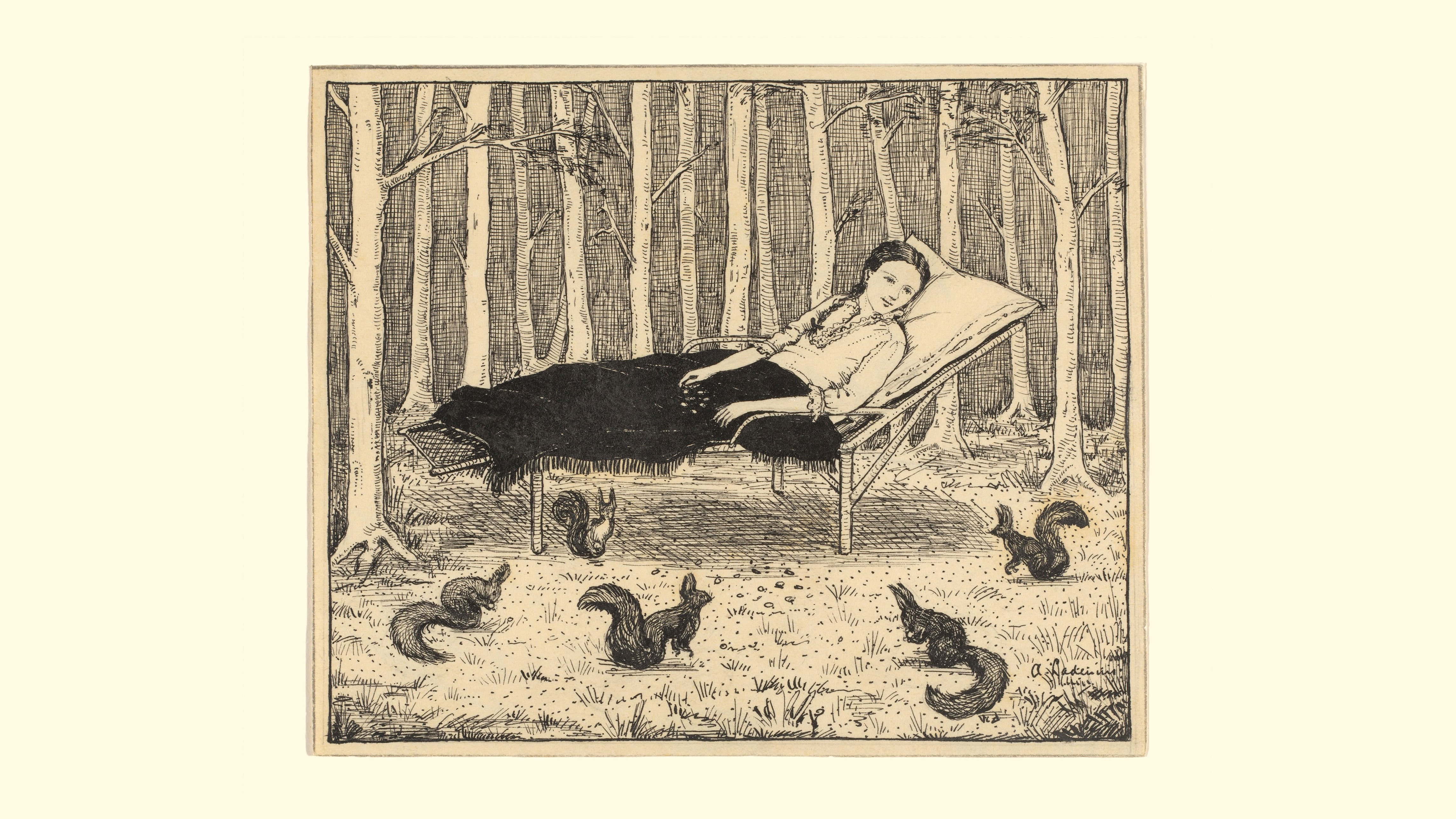Medieval Pets Had One of Humanity’s Most Cursed Diseases

Medieval Pets Had One of Humanity’s Most Cursed Diseases
When Kathleen Walker-Meikle, a historian at the University of Basel, in Switzerland, ponders the Middle Ages, her mind tends to drift not to religious conquest or Viking raids, but to squirrels. Tawny-backed, white-bellied, tufted-eared red squirrels, to be exact. For hundreds of years, society’s elites stitched red-squirrel pelts into luxurious floor-length capes and made the animals pets, cradling them in their lap and commissioning gold collars festooned with pearls. Human lives were so intertwined with those of red squirrels that one of history’s most cursed diseases likely passed repeatedly between our species and theirs, according to new research that Walker-Meikle contributed to.
Uncomfortable questions about medieval squirrels first came up about a decade ago, after another group of researchers stumbled upon three populations of red squirrels—one in Scotland, two on different English islands—with odd-looking features: swollen lips, warty noses, skin on their ears that had grown thick and crusty. A search for microbial DNA in some of those squirrels’ tissues revealed that they had leprosy. “What’s it doing in red squirrels?” John Spencer, a microbiologist at Colorado State University, recalled thinking at the time. Scientists had long thought that leprosy affected only humans, until the 1970s, when they began to find the bacterium that causes it in armadillos too, Daniel Romero-Alvarez, an infectious-disease ecologist and epidemiologist at Universidad Internacional SEK, in Ecuador, told me. But that was in the Americas; in Europe, dogma held that leprosy had essentially vanished by about the 16th century. The most plausible explanation for the pathogen’s presence in modern squirrels, Spencer told me, was that strains of it had been percolating in the rodents unnoticed for hundreds of years.
Bacterial genomes extracted from several of the infected British squirrels suggested that this was the case: Those sequences bore a strong resemblance to others previously pulled out of medieval human remains. The next step was proving that medieval squirrels carried the bacterium too, Verena Schünemann, a paleogeneticist at the University of Zurich, in Switzerland, and one of the new study’s authors, told me. If those microbes were also genetically similar to ones found in medieval people, they’d show that leprosy had probably regularly jumped between rodents and humans.
[Read: Tuberculosis got to South America through … seals?]
Schünemann teamed up with Sarah Inskip, an archaeologist at the University of Leicester, in the U.K., and set out to find an archaeological site in Britain with both human and squirrel remains. They zeroed in on the medieval city of Winchester, once famous for its fur-obsessed market patrons, as well as a large leprosarium. After analyzing dozens of samples from around Winchester, the team was able to extract just four leprosy genomes—three from humans, one from the tiny foot bone of a squirrel. But those turned out to be enough. All four samples dated to about the High Middle Ages—the oldest detection so far of leprosy in a nonhuman animal, Inskip told me. The genomes also all budded from the same branch of the leprosy family tree, sharing enough genetic similarities that they strongly indicated that medieval humans and squirrels were swapping the disease-causing bugs, Schünemann told me.
Still, Schünemann wasn’t sure exactly how that would have happened, given that transmitting a leprosy infection generally requires prolonged and close contact. So, hoping to fill in the blanks, she reached out to Walker-Meikle, who has extensively studied medieval pets.
Walker-Meikle already had the exact type of evidence that Schünemann and her colleagues were looking for: medieval artwork depicting people cradling the animals, documents describing women taking them out for walks, financial accounts detailing purchases of flashy, rodent-size accessories and enclosures of the sort people today might buy for pet dogs, Walker-Meikle told me. Squirrels were so popular at the time that she found written references to the woes of a 13th-century archbishop who, despite years of pleading, couldn’t get the nuns in his district to stop doting on the creatures. They were essentially akin, she said, to tiny lapdogs. Fur processing, too, would have provided ample opportunity for spread. In the High and Late Middle Ages, squirrel fur was the most popular fur used to trim and line garments, and clothes made with it were considered as high fashion as a Prada bag now, Schünemann told me. In a single year in the 14th century, the English royal household purchased nearly 80,000 squirrel-belly skins. Contact between squirrels and humans was so intimate that, throughout much of the Middle Ages, leprosy likely ping-ponged back and forth between the two species, Inskip told me.
[Read: Admit it, squirrels are just tree rats]
But the team’s work doesn’t say anything about the origins of leprosy, which entered humans at least thousands of years ago. It also can’t prove whether leprosy infiltrated humans or red squirrels first. It does further dispel the notion that leprosy is a problem only for humans, Romero-Alvarez told me. Armadillos may have picked up leprosy from humans relatively recently, after Europeans imported the pathogen to South America. The scaly mammals are now “giving it back to humans,” Spencer told me, especially, it seems, in parts of South America and the southern United States, where some communities hunt and eat the animals or keep them as pets.
Human-to-human transmission still accounts for the majority of leprosy spread, which remains uncommon overall. But Romero-Alvarez pointed out that the mere existence of the bacterium in another species, from which we and other creatures can catch it, makes the disease that much more difficult to control. “Everybody believes that leprosy is gone,” Claudio Guedes Salgado, an immunologist at Pará Federal University, in Brazil, told me. “But we have more leprosy than the world believes.” The barriers between species are porous. And once a pathogen crosses over, that jump is impossible to fully undo.
